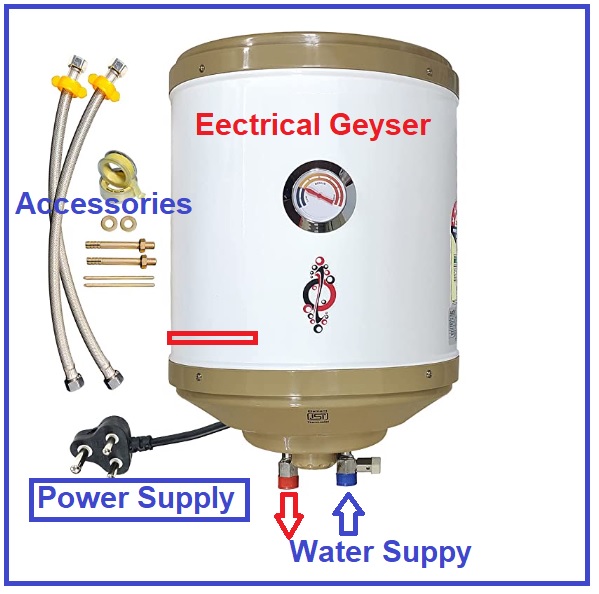Larger geyser sizes are perfect for joint families.
Larger geyser sizes are perfect for joint families.
Blog Article
Just how to Select the Right Geyser to Maximize Power Effectiveness in Your Home
Picking an energy-efficient geyser is not as simple as it seems, calling for cautious assessment of different elements. From recognizing the different types of hot springs, to assessing their power effectiveness rankings and thinking about positioning method, each decision plays a crucial function in maximizing performance. Balancing the initial financial investment with long-lasting financial savings is likewise critical. Let's start this journey to find how to make the most enlightened choice for a geyser that will certainly reduce your energy costs while guaranteeing ideal efficiency.

Understanding the Various Kinds of Geyser
While there are numerous types of hot springs available on the marketplace, understanding the distinctions in between them is important for power efficiency (geyser sizes). The very first kind, storage geysers, are one of the most common and store warm water in a tank for use when required. They are available in different abilities and are generally energy-efficient, however they can shed heat when not being used
The second type is the tankless geyser, which heats water on need, leading to much less power waste however needing a higher initial power draw. Solar geysers make use of solar power to warm the water, making them the most energy-efficient however likewise the most costly.
Evaluating Your Home's Hot Water Needs
Prior to diving right into the purchase of a hot spring, it is essential to evaluate the hot water demands of your family. This evaluation should take into consideration countless variables including the number of house participants, regularity of warm water use, and the number of warm water outlets in the home (geyser sizes). A small family with infrequent hot water use might call for a smaller, less effective geyser compared to a bigger family with numerous daily warm water needs
The sort of home appliances that call for hot water additionally play a considerable role. Dishwashing machines and washing makers, for instance, may call for more warm water than a simple shower or cooking area sink. Furthermore, details activities such as showering or cleansing likewise affect the regularity and volume of warm water needed.
Examining Power Efficiency Scores of Geyser
Having actually evaluated the warm water needs of your family, it's vital to turn your interest to the power performance ratings of geysers. These rankings, generally given as Energy Aspect (EF), show a geyser's overall energy performance pop over here based upon the quantity of warm water created per device of gas consumed over a normal day. The greater the EF, the extra reliable the water heating unit.

Considerations in Geyser Size and Placement
Beyond energy performance rankings, the dimension and positioning of your geyser are critical components to consider. The dimension of the geyser need to straighten with your family's warm water requirements. A little geyser may use less power yet might not supply sufficient warm water for several uses at the exact same time, whereas a larger unit check can meet better need however may consume more power.
Positioning likewise impacts energy efficiency. Hot springs need to be mounted near points of use to minimize warmth loss throughout water transportation. A centrally located geyser can service numerous locations efficiently. Furthermore, thinking about thermal insulation, a geyser situated in a warmer location loses less warmth and consequently utilizes less energy to keep the water temperature level.
Cost Analysis: Stabilizing First Investment and Long-Term Financial Savings
While dimension and positioning undoubtedly play significant duties in a hot spring's energy effectiveness, one have to not ignore the monetary aspect. When considering the first investment, the rate of energy-efficient geysers can be greater than basic models. The raised ahead of time cost can be offset by lasting power savings, making it a worthwhile financial investment in the long run (geyser sizes).
Analyzing long-term cost savings calls for an understanding of the geyser's energy rating. An appliance with a higher rating will eat much less energy, equating to reduced energy costs gradually. Additionally, government motivations and discounts for energy-efficient devices can also help recoup initial costs.
Ultimately, upkeep and life-span must be factored in. Energy-efficient hot springs frequently have longer lifespans and lower upkeep prices, adding to general cost savings. When balancing first financial investment and long-lasting savings, one should take into consideration not just the purchase rate yet additionally energy consumption, federal government motivations, and upkeep expenses.

Conclusion
Choosing an energy-efficient geyser requires cautious factor to consider of various elements. These include comprehending the sorts of geysers, evaluating your home's warm water needs, reviewing power efficiency rankings, and computing price benefits. The best geyser size, placement, and insulation can significantly lower power bills and environmental impact. Making a knowledgeable choice can lead to significant lasting cost savings, making it a worthwhile financial investment for your home.
Report this page